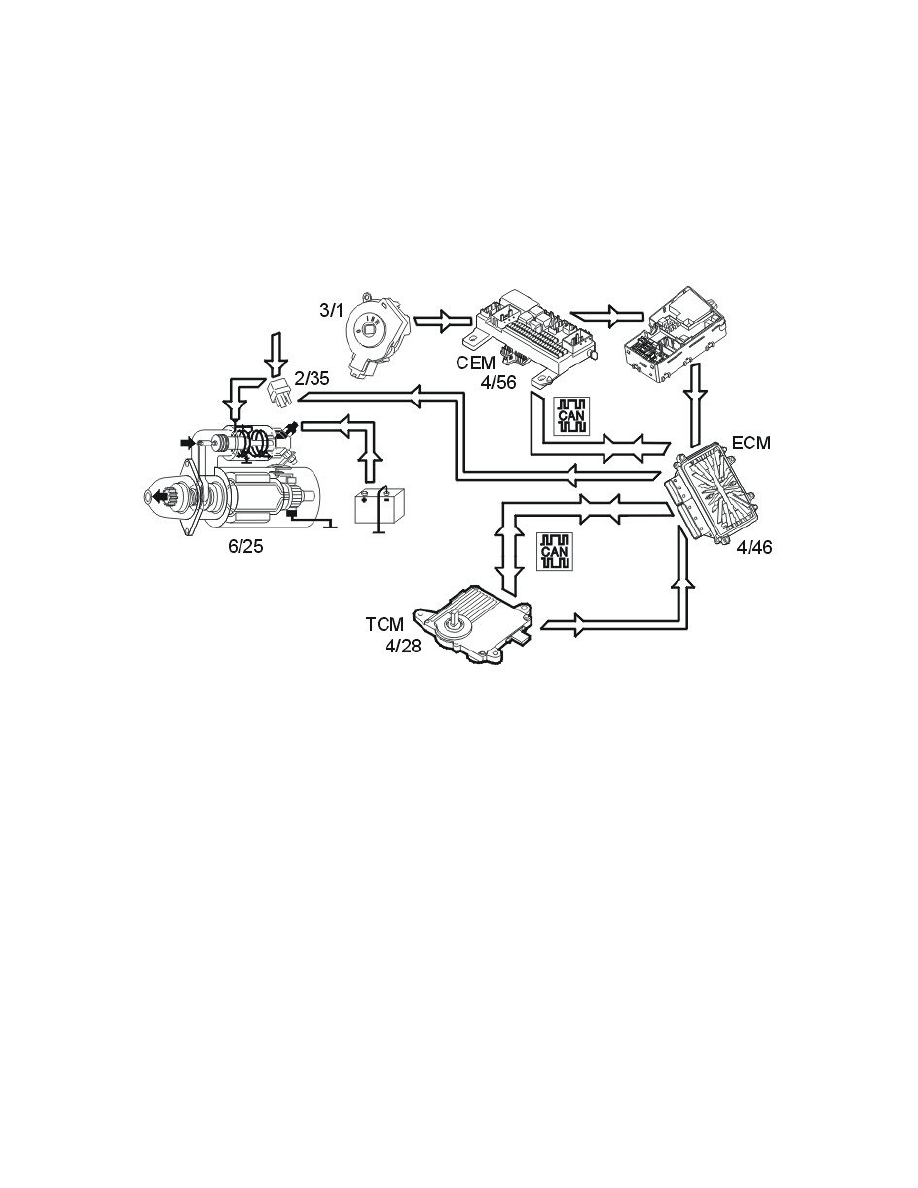V50 AWD L5-2.5L Turbo VIN 68 B5254T3 (2005)

Engine Control Module: Description and Operation
Function
Part 1
Function
Immobilizer
See Design and Function, Immobilizer.
Start (-2005)
The starter motor (6/25) is powered via the starter motor relay (2/35). The relay is controlled by the engine control module (ECM) (4/46). The start
process is as follows:
1. The ignition key is turned to start position (position III)
2. A high signal (Ubat) from the ignition switch (3/1) is transmitted to the engine control module (ECM) and starter relay via the central electronic
module (CEM) and integrated relay/fusebox in the engine compartment. The engine control module (ECM) interprets this high signal as a request
to activate the starter motor.
3. The engine control module (ECM) activates the starter motor solenoid by grounding the relay for the starter motor relay. The relay is powered by
the ignition switch
4. The relay closes the circuit between the starter motor solenoid and the fuse in the integrated relay/fusebox in the engine compartment, activating
the starter motor
5. The engine control module (ECM) activates the starter motor until the ignition key is released from the start position (position III).
The starter motor will not be activated if:
-
the immobilizer function does not permit starting. The engine control module (ECM) receives a signal regarding whether the immobilizer is active
or inactive from the central electronic module (CEM) via the control area network (CAN). For more information, See also Design and Function,
Immobilizer.
-
the gear selector is not in position "P" or "N" (automatic transmissions). The engine control module (ECM) receives a signal indicating the
position of the gear selector from the transmission control module (TCM) (4/28) via both the controller area network (CAN) and from a directly
connected cable between the engine control module (ECM) and transmission control module (TCM). Also see Design and Function, transmission
control module (TCM).
-
the clutch pedal is released (manual transmissions, certain markets). The engine control module (ECM) receives a signal indicating the position of
the clutch pedal from the central electronic module (CEM) via the controller area network (CAN).
Start (2006-)
